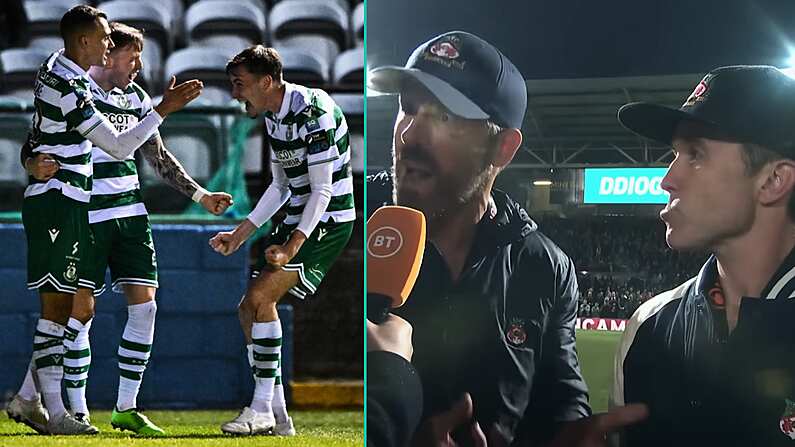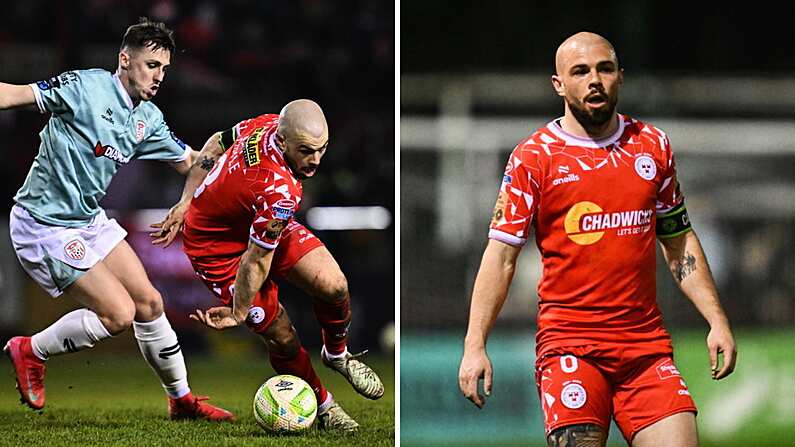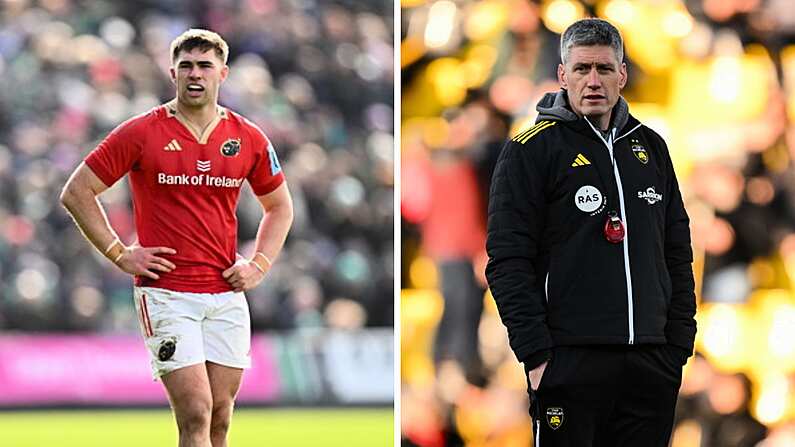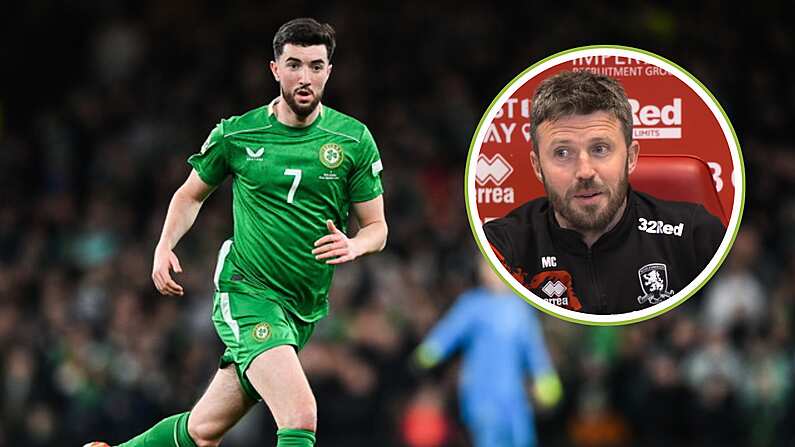Friday December 2 brings the release of a documentary musical about one of Dublin's most famous roads, the North Circular Road. Aptly titled North Circular, the feature-length film by Dublin based filmmaker Luke McManus has already been on the end of a mighty fine reception.
The likes of the Guardian have given North Circular four star reviews, with tribute paid in several reviews to the depth of the stories told.
This author was lucky enough to see the film this week, and can attest to its beautiful depiction of a complex area of Dublin. Its loving treatment of the areas surrounding the North Circular Road paints a fascinating image of the Northside of the city through the decades.
We were also lucky enough to chat to McManus ahead of the film's release, and learned even more about his thought process behind the subject matter, and the role that music and sport play in the community - with particular praise for Bohemians and Kellie Harrington.
North Circular director Luke McManus on sport on the North Circular Road
North Circular opens at the Phoenix Park and works its way along the near-6km orbital route all the way to Portland Row, the site of the joyous 2021 celebrations for Kellie Harrington's Olympic gold medal.
Along the way, stories are told from down through the years, with reference made to pivotal moments in Ireland's past and contemporary history.
Speaking to Balls this week, McManus explained his decision to have the film culminate with the coronation of Kellie at Portland Row, and what made it such a poignant coda for the film.
He noted the power of concluding the film on such a moment of female empowerment, and the power of displaying a positive image of the area after years of gangland feuds in the surrounding neighbourhoods:
It's funny, it was a bit of a random one. I thought, 'I might go down and shoot this and see.' It felt like it was worth shooting.
I'm from Bray...I kinda know what that shit means. Where Katie [Taylor] is from in Bray is kind of the equivalent neighbourhood to Kellie in Dublin. So, I did think it would be interesting - but I didn't think it would be that good!
What was really striking was that particularly the women were the ones who were engaging with us, and talking to us, and very friendly. Nearly all of them said the same thing which was 'you're normally here when there's killings, you're normally here when there's bodies, you're normally here when there's shootings.'
The sight of a TV crew or a camera would have provoked instant anxiety of "somebody's after getting killed. There's a fucking camera crew on the street." For us to be there for this moment of Kellie Harrington winning the gold and suddenly they're under scrutiny but in a much more positive, and uplifting way.
They just kept saying "we can't believe you're here for this, it's so amazing to have you here for the right reasons, we're so proud of her, we love her so much."
It is a powerful ending to the film, and the power of Harrington's success in Tokyo cannot be understated for the community.
McManus used the gold medal win as part of a coda which features almost exclusively female voices for the closing moments of the film. He said that this was a deliberate choice, as the history of Dublin and Ireland has almost been told as we work our way along this famous road.
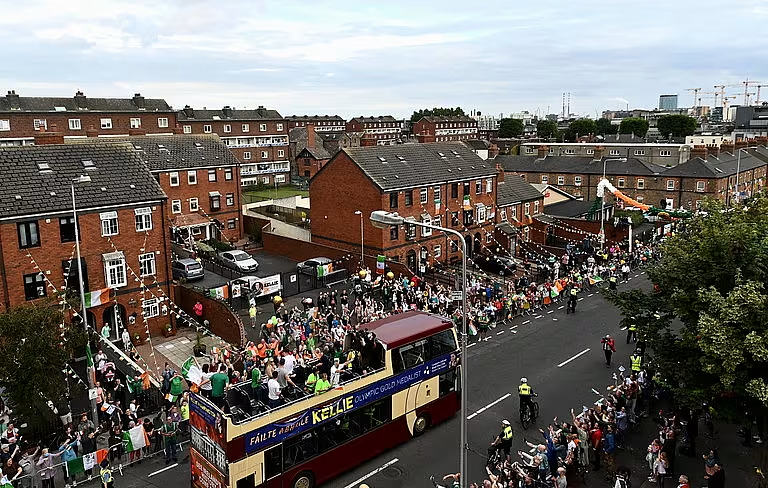
10 August 2021; Team Ireland women's lightweight gold medallist Kellie Harrington and Emmet Brennan pass through Portland Row in Dublin on their return from the Tokyo 2020 Summer Olympic Games. Photo by David Fitzgerald/Sportsfile
Musician Gemma Dunleavy also features in the closing moments, and is one of many musicians to lend their voice to the documentary.
Indeed, North Circular is billed as a "documentary musical" and, as it winds its way down the road from Phoenix to Portland (taking brief detours to visit cultural centres such as the Cobblestone protests of last year), music is an ever present.
Even in those scenes showing protestors campaigning against the closure of the Cobblestone pub in Smithfield, music is the central language, with the film pausing to take in the songs sung in the pub.

Music plays a central role throughout North Circular
Perhaps "pausing" is the wrong word - as McManus explains, music is not only a language of the film - it is the language of North Circular. He had previously worked on music videos and film for new wave traditional group Lankum, and says that the idea to make music central to the documentary evolved from that .
He said that he felt the strategy of telling people's stories through music not only drove the film forward, but added character to the audience's understanding of the stories:
I was always looking to go back into the world of that [his work with Lankum] - but I didn't realise North Circular was going to be the same project as the Lankum black-and-white film until they started to converge.
It's a documentary musical because it's not about music - the music is about the film. When you meet the prisoner, you hear a song about the experience of being a prisoner, when you're talking about lads joining up the army, you hear a song about lads going to fight in Egypt.
This idea of the songs reinforcing your story - it's the same as choosing a lens, or a camera angle, or a location as a way of helping to tell this story. You choose this music.
[The people singing] have charismatic presence, and they're performers. They have a presence which is more authentic, maybe, than an actor's presence, which is almost a "constructed" presence.
The genuine human moments are central to what makes North Circular so enjoyable. One highlight sees musicians playing near the O'Devaney Gardens in the early moments of the film, before the camera pans around to two young children entranced in the performance, bursting into applause as the singers conclude their performance.
Portland Row was not the only area which McManus decided to film off the cuff, and it leads to some brilliant moments of spontaneity. He says that a documentary filmmaker should always go in with a plan - but hope that a better plan appears along the way.
It is a tough watch at points - the film takes in tales of people from the area lost to war over the years, and grapples with the ever-worsening housing crisis in this country, and its capital city specifically.

The people of the surrounding areas are the heart of North Circular
In the midst of the tougher subject matter, there is time given to those projects along the North Circular Road doing brilliant work for the community. McManus says that one of the reasons he chose this huge catchment area as his subject matter is that "everyone has been there" - whether it be for a match at Croker, a show at the 3Arena, to visit the Zoo in the Phoenix Park, or any of the myriad of landmarks to visit along the way.
One of those landmarks is Dalymount Park in Phibsboro, and a significant amount of time is given to a match at "Dalyer" between Bohemians and arch-rivals Shamrock Rovers in November 2021.
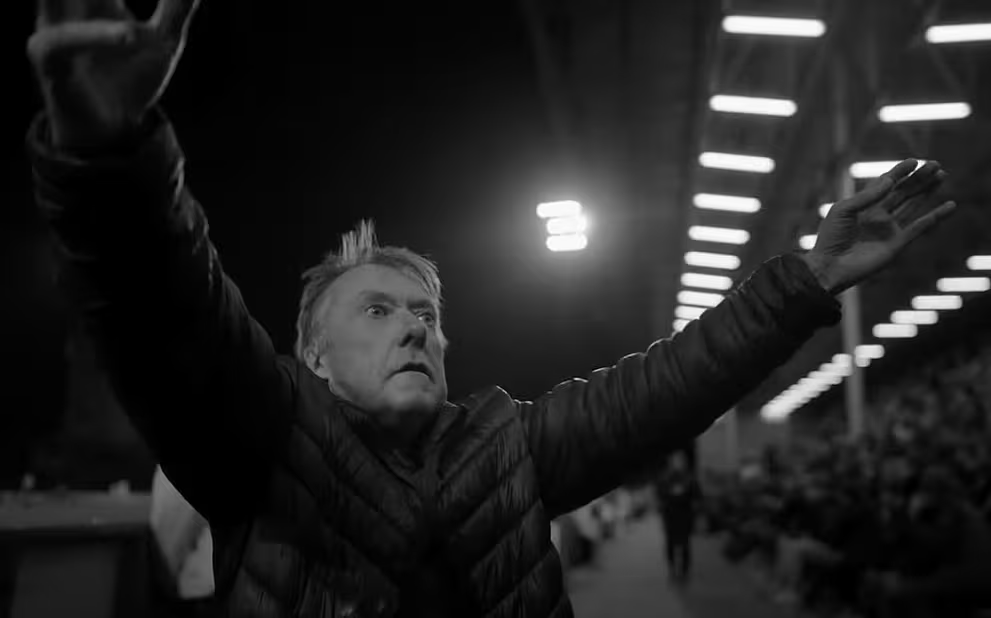
The iconic preacher of Dalymount
The setting of Dalymount Park, with the Gothic St. Peter's Church looming over it, is a dramatic, encroached one, and makes for some stunning cinematic footage on its own - even before the biggest derby in Irish football is taken into account.
The departure of Danny Mandriou to Tallaght-based Rovers was still a bone of contention for Bohs fans almost a year on for that 2021 game, and McManus said that they were lucky to find the crowd in a particularly fired up mood.
When the film focuses in on the Bohemians fan, you get a sense of the importance of this club for the local community, and the passion on display. McManus likens the experience of supporting a club in this manner not only to the tales of youngsters joining armies told earlier in the film, but to the preachers found in the extraordinary Gothic church across the street:
It's not the sport itself, it's the cultural experience of sport that interests me. I've been obsessed with this for years.
When you get to Bohs, that whole sequence is kind of abstract. There were times in the film where I let the film become abstract because I felt, 'this is my chance to be an abstract filmmaker' and if you do it for a few minutes, people will stick with it until you get to the next storyteller.
That sequence in Bohs is about religion, and about belief. St Peter's is right beside Bohs, and it's an extraordinary Gothic church.
Then you cut to Barry Lenihan - "Barry Bohs" as he's known - and he's standing in front of the crowd with his arms up like a sort of preacher, and the crowd are rising up in this incantation and togetherness.
I had this notion about belief and religion, and it was that aspect of the football that took my interest.
Bohs 3 Rovers 1, by the way...
North Circular truly is a special love letter to the areas found along the road - the great, the good, the bad, and the ugly found along the way.

Gemma Dunleavy in North Circular
In a way, McManus' remarks on the celebrations at Portland Row do provide a nice note on which to think about the film, and the image it portrays of the people we meet along the way.
It really was very special to be there. To get up at 4am, the fight was at 6am, you're heading down in the dark, getting the camera set up - you're just not sure what's going to happen. The thing is, it's worth remembering that that was during COVID. That gathering was kind of prohibited. It was iffy. There were lads walking out with pints - I don't know where the pints had come from, it was 6 in the morning! There was a slightly wild atmosphere.
I think the north inner city does have that slightly wild, anarchic, law bending and sometimes breaking energy to it. I really wanted that to be in the film, I didn't want it to be a whitewash of "everything's great" - but I didn't want to wallow in disfunction either. It's a funny balance you have to strike.
There is disfunction and brilliance in equal measure along the way, and North Circular is a poignant examination of an enormous area of Dublin and the identities of all those found along the way.
North Circular releases on Friday December 2 in Irish cinemas. Its premiere is being organised in collaboration with Bohemians, with €2.50 from every ticket sold going back to the club and their work in the local community.




